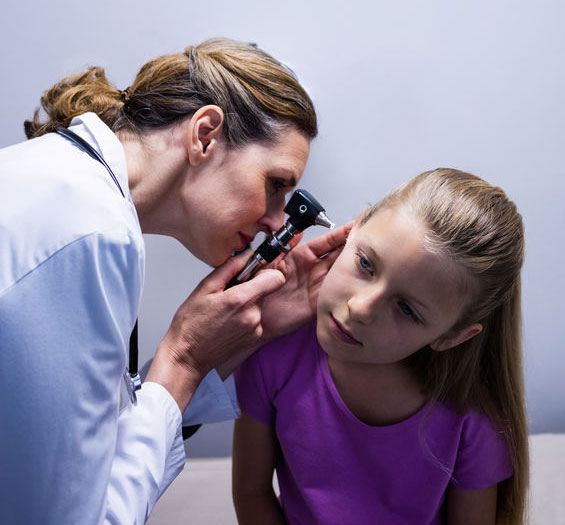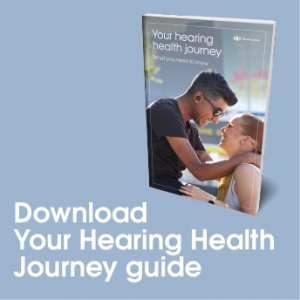
What is sensorineural hearing loss? It is a common type of hearing loss attributed to damage to the microscopic hair cells that live inside of the ear. Damage to these hair cells interrupts the transmission of sound from the inner ear to a nerve in the brain that coordinates hearing.
Although all people lose some of the tiny hair cells located in the cochlea throughout their life, not everyone goes on to develop sensorineural hearing loss. However, aging is one of the leading causes of this type of reduced hearing.
Causes of Sensorineural Hearing Loss
Sensorineural hearing loss comes in two types, acquired and congenital. Acquired sensorineural hearing loss means that the hard of hearing individual developed the loss anytime after birth. Some of the most common causes of acquired sensorineural hearing loss besides aging include:
- Acoustic or head trauma: Acoustic trauma is the term used to describe repeated exposure to very loud noises such as a jackhammer or the sound of a gunshot. This type of sensorineural hearing loss is especially common among current and former members of the military. A blow to the head can also cause permanent loss of hearing.
- Disease or infection: Measles, mumps, meningitis, and other types of viral infections can cause this type of hearing loss.
- Medication: The American Speech-Language-Hearing Association reports that more than 200 types of prescription and non-prescription medications can cause sensorineural hearing loss. The types of drugs most commonly known to cause damage to the hair cells in the inner ear include chemotherapy drugs for cancer, anti-inflammatory drugs, and antibiotics.
- Noise: The National Institute on Deafness and Other Communication Disorders recently released data that indicates approximately 15 percent of Americans between the ages of 20 and 69 suffer from some degree of sensorineural hearing loss due to noise exposure. Unlike acoustic trauma that happens over time, noise-related sensorineural hearing loss can occur after a single exposure to high-decibel sounds like an extremely loud rock concert or an explosion.
- Tumors: Two specific types of tumors, acoustic neuroma and cholesteatoma, can affect how well the auditory system works. Fortunately, both types of tumors are benign. A surgeon may or may not be able to remove them depending on the location.
Congenital Sensorineural Hearing Loss
Congenital sensorineural hearing loss means that the problem occurred sometime during pregnancy and the child is born with abnormal hearing. Some of the most common causes here include:
- Diseases such as rubella that the mother passed to her fetus at some point during pregnancy.
- Genetic causes when either the mother or father passes along a faulty gene that causes inner ear hair cell damage.
- Mother’s diabetes, either the gestational type or regular type 1 or type 2 diabetes.
- Oxygen deprivation during labor and the birthing process.
- Premature birth.

How to Detect This Condition
Those with an acquired sensorineural hearing loss may not notice their hearing changing gradually over time. The first indication is often difficulty making out the sound of others’ speech in noisy environments such as restaurants, sometimes referred to as pub deafness.
Many people with this type of hearing deficiency describe a difficulty in understanding women’s or children’s voices due to the fact they’re higher pitched. Hearing sounds such as the ticking of a clock, hum of a refrigerator, or birds chirping outside can also indicate a this type of hearing loss.
More than 90 percent of babies born with congenital sensorineural hearing loss have two biological parents with normal hearing. This can make it difficult for them to recognize when their baby and later toddler and preschooler has a hearing problem.
One of the first indications might be slowness to develop language and extreme difficulty with word pronunciation and clarity once the child does start talking. Following a pediatrician’s recommended visit schedule can help to catch a congenital sensorineural hearing loss as early as possible and allow the child to enroll in early intervention services.
Testing & Treating Sensorineural Hearing Loss
An audiologist will perform several types of hearing tests to determine if a patient has a sensorineural hearing loss and the severity of it. For children too young to cooperate with testing, medical staff will provide a sedative. This helps the child fall asleep, before various sounds are played into the child’s ear via a small tube. The response from the tiny hairs of the inner ear then determine whether the child has normal hearing or not.
Most individuals with sensorineural hearing loss are classified as having “mild-to-moderate” hearing loss and will benefit from wearing hearing enhancement devices. However, the majority of individuals in the mild-to-moderate stages decline to purchase hearing aids. Traditionally, these individuals decline to treat their hearing for one or more of the following reasons:
- The cost of a hearing aid. (The average cost of a single hearing aid – for one ear – is $2,372 USD according to Dr. Abram Bailey of Hearing Tracker)
- The hassle of getting a hearing aid fitted. (Full process of getting qualified and fitted for a traditional hearing aid usually involves multiple appointments at an audiologists office)
- The stigma of hearing aids. (Many individuals feel that wearing a hearing aid makes them appear as old or physically compromised)*
*Nuheara is not designed to be an alternative to all day wear hearing aid.
Take our free online hearing test to see if you have any level of hearing loss. Visit https://www.nuheara.com/online-hearing-assessment/
Hearable Technology Offers Innovative New Solutions

There is an on-going convergence between wireless earbuds and hearing aids are hearables. Demonstrating this phenomenon are a range of new devices that offer more affordable and accessible solutions for enhanced hearing. To date, no device has better exhibited the potential of hearables for hearing loss IQbuds2 MAX. Offering easy access to control how you hear your world, these smart earbuds address all 3 of the primary factors that typically deter those with mild-to-moderate hearing loss from seeking treatment:
- At $399 USD per pair for IQbuds2 MAX, these earbuds cost a fraction of what traditional hearing aids do. For those with insurance plans that will not cover the costs of hearing devices, the price point is far more affordable than traditional hearing aids
- With the Ear ID application on their smartphone, an IQbuds2 MAX user can self-assess their own hearing profile. Using this tool, they can auto-calibrate their earbuds in approximately 10 minutes. Further refinements to the hearing and audio settings can be made via their phone or even with a simple tap touch of the earbuds. The ease of use and adjustment eliminates much of the hassle associated with traditional hearing aids.
- Lastly, IQbuds2 MAX feature form factors that align with many of today’s most popular truly wireless earbuds. Subsequently, wearing Nuheara earbuds does not come with the same stigma many consumers feel when using hearing aids.


